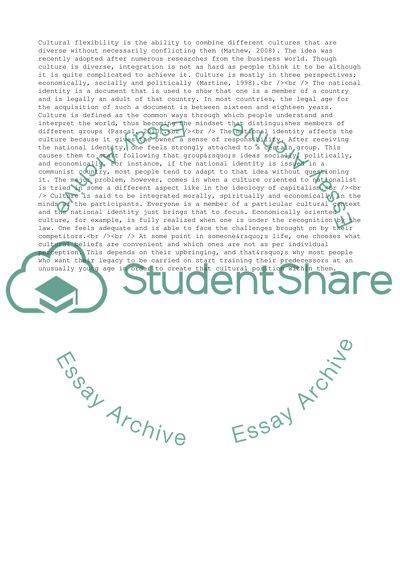Cite this document
(Developing Cultural Flexibility Assignment Example | Topics and Well Written Essays - 2000 words, n.d.)
Developing Cultural Flexibility Assignment Example | Topics and Well Written Essays - 2000 words. Retrieved from https://studentshare.org/management/1761460-developing-cultural-flexibility
Developing Cultural Flexibility Assignment Example | Topics and Well Written Essays - 2000 words. Retrieved from https://studentshare.org/management/1761460-developing-cultural-flexibility
(Developing Cultural Flexibility Assignment Example | Topics and Well Written Essays - 2000 Words)
Developing Cultural Flexibility Assignment Example | Topics and Well Written Essays - 2000 Words. https://studentshare.org/management/1761460-developing-cultural-flexibility.
Developing Cultural Flexibility Assignment Example | Topics and Well Written Essays - 2000 Words. https://studentshare.org/management/1761460-developing-cultural-flexibility.
“Developing Cultural Flexibility Assignment Example | Topics and Well Written Essays - 2000 Words”. https://studentshare.org/management/1761460-developing-cultural-flexibility.


